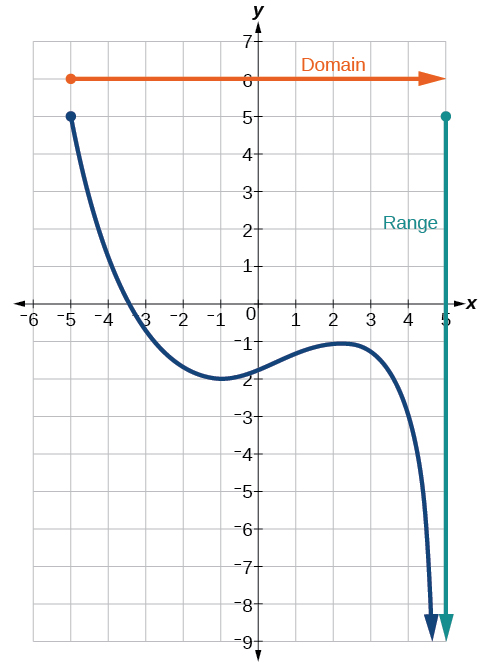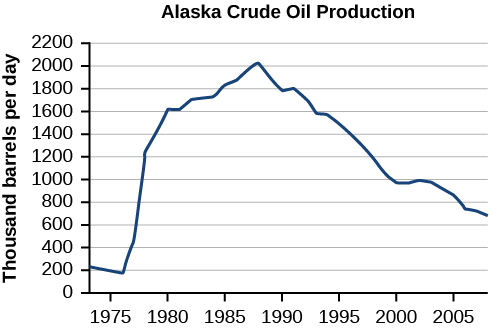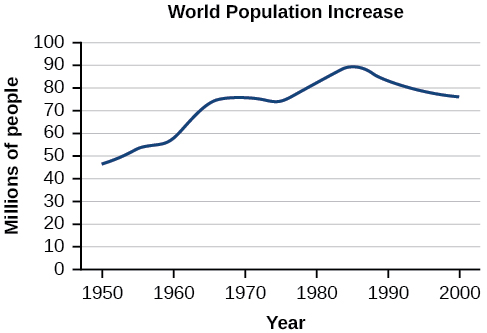2.4 Finding Domain and Range from Graphs
Another way to identify the domain and range of functions is by using graphs. Because the domain refers to the set of possible input values, the domain of a graph consists of all the input values shown on the x-axis. The range is the set of possible output values, which are shown on the y-axis. Keep in mind that if the graph continues beyond the portion of the graph we can see, the domain and range may be greater than the visible values. See Figure 2-6.
We can observe that the graph extends horizontally from [latex]\text{}-5\text{}[/latex] to the right without bound, so the domain is [latex]\text{}\left[-5,\infty \right)\text{}\text{}[/latex]. The vertical extent of the graph is all range values [latex]\text{}5\text{}[/latex] and below, so the range is [latex]\text{}\left(\mathrm{-\infty },5\right]\text{}[/latex]. Note that the domain and range are always written from smaller to larger values, or from left to right for domain, and from the bottom of the graph to the top of the graph for range.
Example 1: Finding Domain and Range from a Graph
Example 2: Finding the Domain and Range from a Graph
Question & Answer
Can a function’s domain and range be the same?
Yes. For example, the domain and range of the cube root function are both the set of all real numbers.
Access for free at https://openstax.org/books/precalculus/pages/1-introduction-to-functions
- http://www.eia.gov/dnav/pet/hist/LeafHandler.ashx?n=PET&s=MCRFPAK2&f=A. ↵


![Graph of a function from (-3, 1].](https://ecampusontario.pressbooks.pub/app/uploads/sites/2184/2021/11/CNX_Precalc_Figure_01_02_007.jpg)


